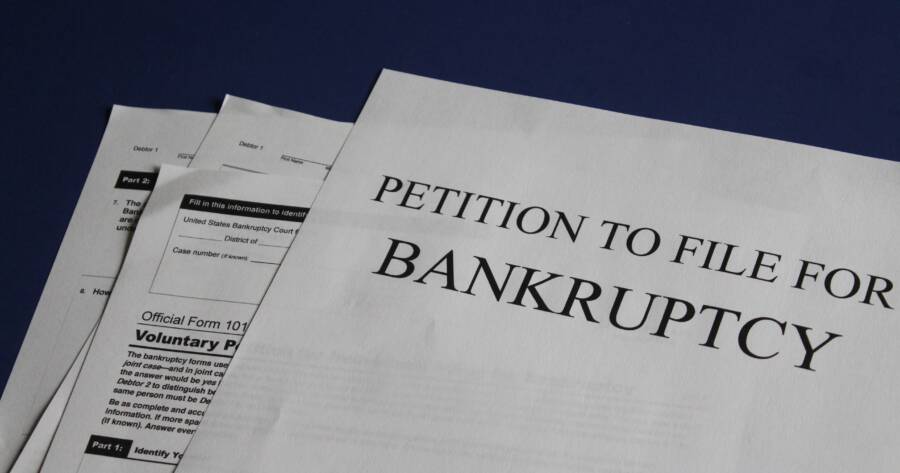If you’re having trouble paying your debt, you may be able to file for bankruptcy for relief. Bankruptcy law offers several distinct paths for individuals and businesses facing overwhelming debt, each tailored to specific financial situations and goals. Understanding the six recognized types provides clarity on eligibility, repayment expectations, asset protection, and long-term consequences. By grasping how each chapter functions, debtors and creditors alike can make informed decisions that support financial recovery, safeguard essential assets, and promote a structured resolution to economic hardship.
The Six Types of Bankruptcy: A Quick Guide
When individuals or businesses are overwhelmed by debt and unable to make timely payments, they may file for bankruptcy to resolve financial difficulties. There are six types of bankruptcies:
- Individuals typically file for Chapter 7, 12 or 13 bankruptcy
- Businesses usually file for Chapter 7 or 11 bankruptcy
- Municipalities and other entities file for Chapter 9 bankruptcy
- Foreign debtors file for Chapter 15 bankruptcy
How Does Bankruptcy Work?
Bankruptcy is a legal process that’s handled in federal court and begins when the debtor — the individual or entity in debt — files a petition in bankruptcy court. The different types of bankruptcies are named for the relevant chapter of the U.S. Bankruptcy Code.
Most bankruptcy cases are handled outside of court by a trustee, unless there’s an objection to the case.
Bankruptcy may involve:
- Reorganizing debt and creating a repayment plan
- Liquidating assets to repay creditors
- Erasing some or all debt and enabling debtors to keep most of their property
Once bankruptcy proceedings have started, creditors can no longer try to collect debts or make claims on future income or assets.
It usually costs several hundred dollars to file for bankruptcy, in addition to attorneys’ fees.
What to Consider Before Filing for Bankruptcy
While bankruptcy can protect you from creditors, it should be considered a last resort. It remains on your credit report for up to ten years and affects your future ability to borrow, secure employment or find a place to live.
Before filing for bankruptcy protection, all debtors must first try to resolve their problems with counseling from an approved credit counseling agency. This must take place in the 180 days prior to the date of filing and involves a review of your financial situation, alternatives to bankruptcy and possible debt repayment plans.
Types of Personal Bankruptcies
Personal bankruptcies account for the majority of bankruptcy cases. For the quarter ending March 31, 2021, there were:
- 345,224 Chapter 7 bankruptcies
- 119,502 Chapter 13 bankruptcies
- 487 Chapter 12 bankruptcies
What Is Chapter 7 Bankruptcy?
Individuals who don’t have enough income to repay a significant portion of their debts typically qualify for Chapter 7 bankruptcy. Also known as straight bankruptcy or the liquidation chapter, Chapter 7 involves selling a debtor’s property for cash.
Depending on the state, certain types of property may be exempt, such as homes, vehicles and work-related equipment. The trustee distributes the proceeds of the liquidation to creditors. Often, individuals in these cases don’t have many assets of value and can keep some or most of their property in addition to having their debts erased.
Debtors who exceed a certain income threshold may not be eligible for Chapter 7. As well, this type of bankruptcy remains on a credit record for 10 years, and individuals can’t file again under the chapter for eight years.
What Is Chapter 13 Bankruptcy?
Under Chapter 13, individuals who have regular income can propose a plan to repay all or part of their debts. They promise a percentage of their future income to creditors, usually making smaller monthly payments over a period of three to five years.
Payments are made to a trustee, who then distributes the funds to creditors. Chapter 13 protects individuals from losing a mortgaged home, car or other assets while they catch up on their debt.
Chapter 13 bankruptcy remains on a credit record for seven years, and individuals typically can’t file again under the chapter for two years.
What Is Chapter 12 Bankruptcy?
Farmers and fishermen who have seasonal income can propose a plan to repay part or all of their debts to creditors in the form of monthly payments over three to five years. Chapter 12 is similar to a Chapter 13 bankruptcy, but offers more flexibility because of income fluctuations.
What Else to Know About Personal Bankruptcy
Bankruptcy protection may prevent or postpone actions such as foreclosures, repossessions, wage garnishment and shut-off of utilities, such as electricity or heat. It doesn’t remove obligations to pay child support, alimony, taxes, student loans or government fines.
Properties with unpaid mortgages or security liens aren’t usually protected except in certain circumstances under Chapter 13.
Other Types of Bankruptcies
What Is Chapter 11 Bankruptcy?
Corporations, partnerships and some individuals use Chapter 11 bankruptcy to restructure debt without liquidating all of their assets. The debtor presents a repayment plan, which must be accepted by creditors and approved by a court.
Because companies want to continue operations, this type of bankruptcy usually involves complex restructuring. Some of the stakeholders affected include lenders, vendors, landlords, shareholders, employees and customers.
What Is Chapter 9 Bankruptcy?
Entities such as municipalities, counties, school districts and municipal utilities use Chapter 9 to reorganize their debts. They may negotiate with creditors to reduce principal or interest, extend their window of repayment or refinance the debt. Because a court can’t liquidate the assets of a municipality, its role in Chapter 9 is typically to approve the repayment plan and make sure that it’s carried out.
What Is Chapter 15 Bankruptcy?
Chapter 15 allows foreign nationals who may have assets in the United States to file for bankruptcy in U.S. bankruptcy courts. Typically, the main bankruptcy proceedings take place in their home country and Chapter 15 is an ancillary filing.
Deciding to File for Bankruptcy
Difficulty in paying off debt can happen for many reasons, including loss of income, divorce and unexpected emergencies, such as medical bills. Be sure to discuss your specific situation with a credit counseling agency or attorney to determine the type of bankruptcy protection that is most appropriate for your needs.






